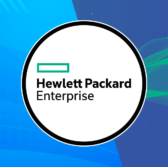El Gardner, vice president of space operations at Aperio Global, spent over 30 years in the U.S. military before making a pivot to the private sector in May. He has served in both Air Force and Space Force roles, giving him a deep understanding of the space domain and the intricacies of global tensions.
What brought him to Aperio was the chance to use his experience to connect the company’s artificial intelligence and cyber capabilities to the space domain, which presented an opportunity to do something different while leaning into his existing skill set.
In a recent Executive Spotlight interview with ExecutiveBiz, Gardner offered his insights on how the space domain has transformed and explored use cases in which the U.S. government could leverage commercial space capabilities. He also reflected on lessons learned from the Russian invasion of Ukraine. Read the full interview below.
What are our biggest threats in space, and how are we addressing those threats to maintain our space superiority, especially during this era of increasing competition?
There is so much going on in space that is worthy of discussion, but I will say the biggest threat in space is an inherent vulnerability to attack. The current systems we use were not built to be defended, they were built to provide a capability and a service rather than recognize space as the warfighting domain we now know it to be. They are not designed to be defended like a fighter aircraft — which may have its own missiles to attack or chaff and flares — or a ship that may have some sort of defensive capabilities. Our space systems are simply not built that way. There are also specific vulnerabilities like cyber, the ability to get into the network one way or another and perturb the information that we need to flow back and forth.
How do you think the proliferation of commercial entrants in space is changing the domain? What trends or shifts can we expect to see from that going forward?
We are at the dawn of an exciting time where the government is no longer the leader in space. It’s the commercial sector that is leading in growth, innovation and in contributions for dual-use capabilities that can have military utility, which is a complete shift in the environment.
This manifests in many different ways. What we’re looking at now is the commercial sector bringing improved defense capacity. By bringing more sensors online, you have more ability to do what you already need to do.
We’re also looking at the added benefit of workload reduction. We now have commercial remote sensing capabilities that can do many of the things we might traditionally reserve for some of our highly demanded satellites, say an NRO satellite. They may not be able to do this at the same skill level, but they could do it well enough for the stated purpose. By leveraging commercial capabilities, you get the opportunity to load shed taskings to the commercial sector while reserving the highly exquisite capabilities for what must be done with military-use satellites.
There are many other commercial benefits, such as strength, resilience and mission assurance. Bringing more sensors out there at any point in time prevents the prohibitive effect of losing one because there are other sensors that represent a fallback capability, which provides resilience and mission assurance. There’s also the ability to close gaps and weaknesses. For example, if you have an entire network of military sensors and an entire network of commercial sensors at any point in time on earth, you have faster revisit rates and the ability to actually see whatever you need to see and keep the adversary from having the opportunity to obfuscate their movements.
Information sharing is another one. If I pull information from a commercial open source satellite database, I don’t have the same concerns about sources and methods that I would have if I were to use a highly classified satellite. For example, in a coalition environment, I can share more information readily with my neighbors, partners and allies using unclassified means that meet the stated purpose without having to worry about going through all the classification hurdles and hoops that we have.
Industry brings innovation, and with innovation comes the opportunity for rapid technology refresh. One of the things you see certain agencies like the Space Development Agency doing is launching things in tranches. They’ll do these launches, and 24 months later, there’s another tranche, which gives them an opportunity to bring in fresh technology every two years. This is a break in the paradigm where we would launch a satellite and hope for it to last seven, 10, 15 years. With industry constantly innovating, we can bring more things online very quickly.
All of these are contributions that come from the proliferation of commercial interests, and you can expect to see trends in areas like on-orbit servicing. There are several companies out there that are working on prototypes and proofs of concept, which will have significant implications for the longevity of our missions and the satellites on orbit themselves. We’ll also continue to see trends in reusable rocketry, which has been a game changer for the space industry. There is a lot that the commercial sector is bringing to the game that is absolutely phenomenal.
What do you think is the number one lesson we can learn from the Russian invasion of Ukraine? What information have we gathered that will help the U.S. military to better prepare for and respond to future conflicts?
Having recently retired after spending my entire adult life as a member of the military, I’ve watched the Russian-Ukraine conflict with great interest. I would note four key areas — information warfare, command and control, kill chain and decision advantage — in which we have learned.
What I pull away from the Russian invasion of Ukraine is that Russia understands the value of information warfare as an integral part of warfighting. They are trying to leverage information warfare to perturb the adversary’s command and control network, influence the adversary’s kill chain and maintain decision advantage. The reason I group these four terms together is because information warfare has these other elements and touchpoints. Russia is quite adept at using it, so our lesson is that information warfare must be factored into how we fight.
What that means for us is that we have to improve the speed and resilience of our kill chain; make sure we protect our ability to understand what is happening in the environment; and protect the nodes and links that allow us to push information down to the tactical edge where the kinetic aspect of things must happen. We must have decision superiority and the ability to understand our environment and make decisions quickly and with clarity. The trick is, if we understand that lesson, determining the resources and materials we need to bring to bear to actually enable the ability to do so.
Where are you seeing opportunities for expansion in Aperio’s portfolio? What new capabilities or markets are you eyeing?
Space operations is one area in particular where we are seeing opportunities for expansion. How does the space community leverage artificial intelligence and machine learning? How does it deal with its data? Oftentimes in today’s vernacular, you hear people talk about data overload and decision overload. One opportunity we see is the ability to keep bringing our technology to bear, which helps reduce that data overload and allows users to get the data they need with the benefit of AI curating that data in a meaningful way.
AI and ML is one key opportunity for expansion in Aperio Global’s portfolio and a chance for us to contribute to improving the kill chain and decision advantage. At a more operational level — specifically in areas of missile warning, missile tracking, command and control and space domain awareness — there are growth opportunities for Aperio as we bring our technologies to market. In the end, our opportunity is to help the warfighter with one of their key mantras: ‘we need the ability to sense, make sense and act.’ Aperio Global’s technology and subject matter expertise directly contribute to the warfighter’s ability to sense, make sense and act.





